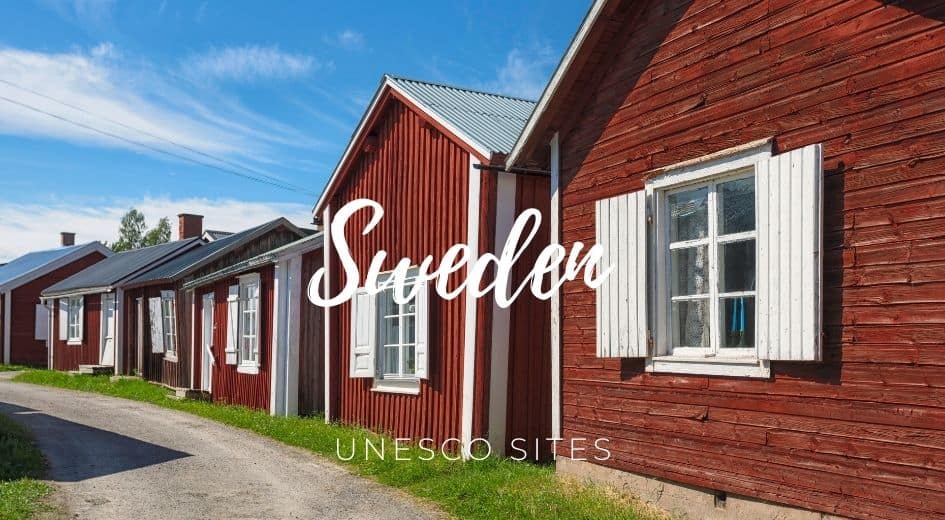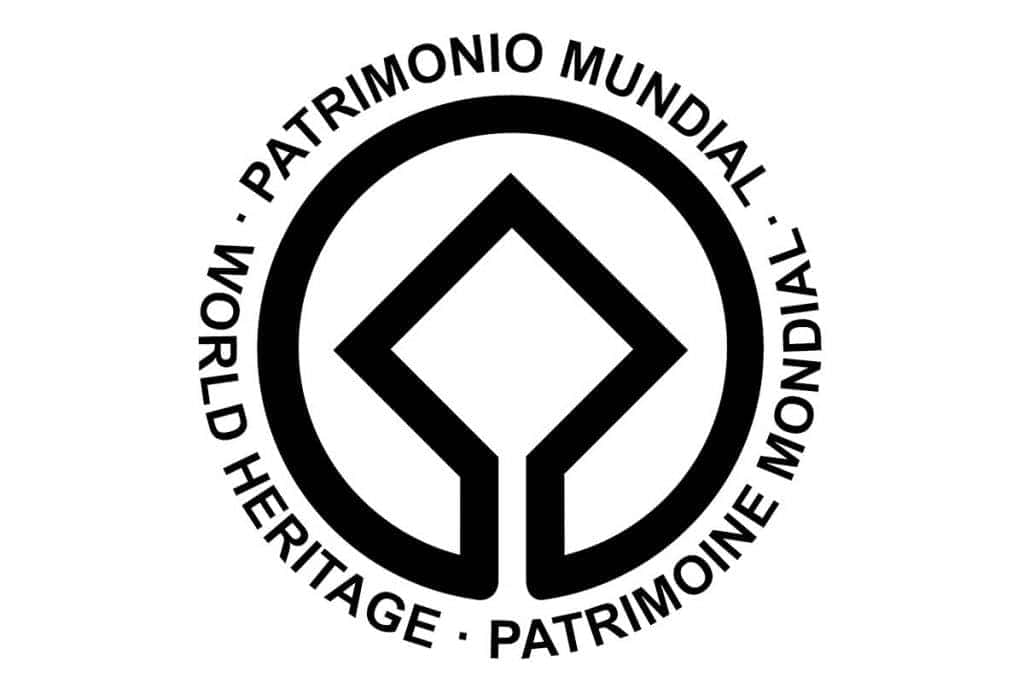Table of Contents


Sweden UNESCO has registered 15 sites on the World Heritage list and 1 on the tentative list.
Some places are so interesting that it’s relevant to keep them for future generations. This is why UNESCO has built a list of crucial classified properties in which superb places stand out for their aesthetic, natural, artistic, or cultural significance.
More than a thousand places are registered as Unesco’s World Heritage worldwide. Due to my interest in visiting World Heritage sites, I compiled the UNESCO list in Sweden and the corresponding map.
Sweden UNESCO list
- Agricultural Landscape of Southern Öland
- Birka and Hovgården
- Church Town of Gammelstad, Luleå
- Decorated Farmhouses of Hälsingland
- Engelsberg Ironworks
- Grimeton Radio Station, Varberg
- Hanseatic Town of Visby
- Mining Area of the Great Copper Mountain in Falun
- Naval Port of Karlskrona
- Rock Carvings in Tanum
- Royal Domain of Drottningholm
- Skogskyrkogården
- Struve Geodetic Arc
- High Coast / Kvarken Archipelago
- Laponian Area
Sweden UNESCO Map
Click on the blue pins to view more relevant information about each World Heritage site in Sweden.
Description
- Agricultural Landscape of Southern Öland is a cultural landscape located on the Swedish island of Öland. It is known for its well-preserved traditional agricultural practices, including grain cultivation and livestock grazing, and is recognized as a UNESCO World Heritage Site.
- Birka and Hovgården: are archaeological sites located near Stockholm, Sweden. They are known for their well-preserved Viking Age remains and are recognized as a UNESCO World Heritage Site.
- Church Town of Gammelstad, Luleå: is a well-preserved historic town in northern Sweden. It is known for its well-preserved wooden buildings and churches and is recognized as a UNESCO World Heritage Site.
- Decorated Farmhouses of Hälsingland: are traditional farmhouses in central Sweden. They are known for their unique and well-preserved interior decorations and are recognized as a UNESCO World Heritage Site.
- Engelsberg Ironworks: is a historic ironworks located in central Sweden. It was built in the 17th century and is known for its well-preserved industrial architecture and machinery. It is recognized as a UNESCO World Heritage Site.
- Grimeton Radio Station, Varberg: a historic radio station in southwestern Sweden. It was built in the early 20th century and is known for its well-preserved machinery and architecture. It is recognized as a UNESCO World Heritage Site.
- Hanseatic Town of Visby: is a well-preserved medieval town located on the island of Gotland, Sweden. It is known for its well-preserved Gothic architecture, narrow streets, and historic buildings, and is recognized as a UNESCO World Heritage Site.
- Mining Area of the Great Copper Mountain in Falun: a historic mining site in central Sweden. It operated from the 10th century until the 1990s and is known for its well-preserved mining structures and cultural landscape. It is recognized as a UNESCO World Heritage Site.
- Naval Port of Karlskrona: is a well-preserved naval base located on the southern coast of Sweden. It was built in the late 17th century and is known for its well-preserved naval architecture and historic buildings. It is recognized as a UNESCO World Heritage Site.
- Rock Carvings in Tanum: is a group of Bronze Age petroglyphs in western Sweden. They are known for their well-preserved and extensive collection of rock carvings, which depict various human and animal figures. They are recognized as a UNESCO World Heritage Site.
- Royal Domain of Drottningholm: is a historic palace complex near Stockholm, Sweden. It was built in the 17th century and is known for its well-preserved Baroque architecture and beautiful gardens. It is recognized as a UNESCO World Heritage Site.
- Skogskyrkogården: is a historic cemetery located in southern Stockholm, Sweden. It was built in the early 20th century and is known for its well-preserved landscape design and modernist architecture. It is recognized as a UNESCO World Heritage Site.
- Struve Geodetic Arc: is a series of survey triangulations that stretches from Norway to the Black Sea, passing through ten countries, including Sweden. It was used in the 19th century to measure the size and shape of the earth and is recognized as a UNESCO World Heritage Site.
- High Coast / Kvarken Archipelago: The High Coast / Kvarken Archipelago is a UNESCO World Heritage Site located on Sweden’s eastern coast and Finland’s western coast. It is known for its unique landscape, formed by glacial rebound following the last ice age. Its rocky coastline, islands, and unique geological formations characterize the site.
- Laponian Area: is a UNESCO World Heritage Site in northern Sweden. It is known for its well-preserved and unique natural and cultural landscapes, home to several indigenous Sami communities. The site is characterized by its vast wilderness areas, mountain ranges, rivers, forests, and unique traditional land use practices.
UNESCO World Heritage Sites in Sweden have protected places for their cultural and natural importance.
Sites on the Tentative List
- The Rise of Systematic Biology


